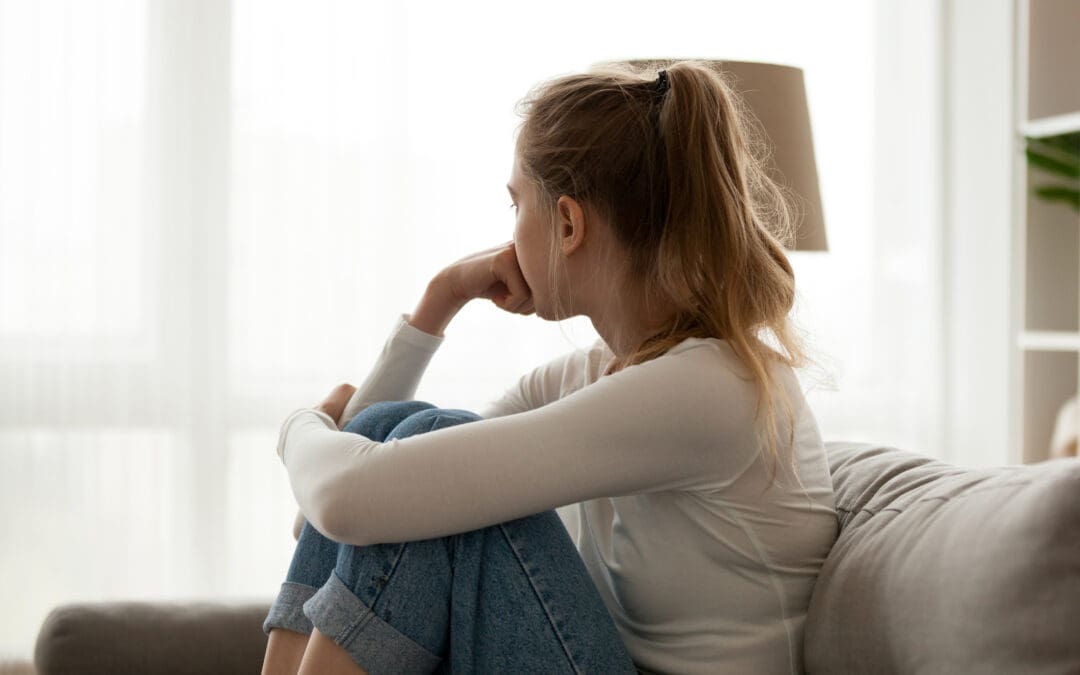In April, PBS’ Frontline documentary series released an episode entitled The Abortion Divide. Produced by the same correspondent who covered abortion more than 30 years ago in another Frontline documentary, this new installment returned to downtown Philadelphia to speak with women and men facing unplanned pregnancies about why they chose abortion or chose life.
As a Pro Abundant Life person, I went into my viewing expecting the worst. The media seems largely unwilling to portray the circumstances around abortion, or the great work done by pregnancy centers and life advocates in communities across the country, in a fair light. Despite my reservations, I found a much more honest portrayal of abortion and its related issues than I expected.
Don’t get me wrong, there was still some glaring bias in the documentary. The producer even concluded the documentary by saying that, “Only they [women] know what they should do.” However, The Abortion Divide accurately portrayed the reasons women and men choose abortion, the role of pro-life pregnancy center ministry, and that we need a holistic Pro Abundant Life response to abortion.
Why Women and Men Choose Abortion
The first thing I noticed while watching The Abortion Divide was the producer’s choice in music. Instead of uplifting or celebratory music, the film has a moody and, even in places, a darker sounding background track. This matched the tone of what was depicted on screen. I saw the tears as women were told they were indeed pregnant, or in some cases, pregnant with twins. One expectant mother said, “When she said that there were twins, I wasn’t prepared for that at all. I didn’t even consider the possibility. I don’t know. It’s not a rational thing. It felt, it made things a little different.” Later in the film I watched as she underwent her surgical abortion.
While some women were more confident about their decisions than others, none celebrated them. There were no joyful smiles, but there were lots of tears. Women explained how it was due to bad relationships, bad finances, difficulties at work, raising other children as a single parent, and other reasons that they were choosing to end the lives of their children. No one in the abortion clinic talked about their baby as if it were a clump of cells. In fact, one mother even looked into the camera and spoke as if she were talking to her twins, thanked them for choosing her, and apologized that she wasn’t ready to choose them.
I was most surprised by PBS’ decision to air multiple surgical abortions on-screen. I saw the blood and fetal tissue going through the suction tube. I heard the whirring of the machine. I witnessed the look of turmoil on the faces of those having abortions. For years, I have heard pro-life people say, “we need to just show abortion on screen and people won’t have one.” The rationale for this argument is understandable. If we humanize the unborn child in the mind of the public, people are less likely to support abortion, much like humanizing slaves helped end public support of slavery.
The problem is, our culture has shifted away from a Judeo-Christian worldview that required putting someone else’s needs above our own. Doing “what’s right for me” has become our greatest virtue. For these women, and those who will have abortions after watching The Abortion Divide, seeing a surgical abortion on-screen won’t change the reasons why they believe abortion is necessary for them. Yes, abortion may be immoral or a bad decision in theory, but when suddenly faced with a crisis pregnancy, many see the unborn child as a life worth sacrificing.
Despite all the calls for women to “shout their abortions,” or arguments by the Left about abortion “empowering women,” it is almost impossible to watch The Abortion Divide and come away with any sense of abortion’s “empowerment.” Most of the women choosing abortion already had children. Several had prior abortions. They didn’t want another abortion, but saw no way to carry their babies to term.
PBS’s message was clear: abortion is a necessary evil to help women in desperate situations, and pro-life ministries aren’t doing enough.
The Role of Pregnancy Center Ministry
The producers interviewed women who chose life after becoming residents of a pro-life maternity home. One woman had seven prior unplanned pregnancies. Two of her children lived with her sister and five were in foster care. Another resident had four children. Both were single mothers facing severe financial difficulty. The clear implication of the interviews was that the pro-life staff of the maternity home succeeded in helping women choose life, but did not necessarily help them get out of the situations that led to their unplanned pregnancies. I think many viewers will come away feeling that the only thing pro-life people do is “saddle the foster care system with unwanted children.”
I am not unfamiliar with this argument. I see it frequently on Facebook. “If you are really pro-life, what are you doing to help women after the baby is born?” What activists who use this argument miss is that, if they are truly pro-choice, then they are just as obligated to help women who want to choose life as we are. After all, if that is her choice, society should support her so her desire becomes reality, right? So then, pro-choice people should support pro-life pregnancy centers, not just abortion clinics. (You can read my post on The Pro-Choice Case for Pregnancy Centers here).
That said, I believe, as a movement, we can do a much better job of responding to this argument than we often do. It’s not enough to say, “we care about what happens after birth; here’s the pregnancy centers we support.” Our movement needs to connect those clients with churches for long-term discipleship and care.
Care Net leads a network of 1,100 affiliated pregnancy centers. These centers do tremendous work providing clients with compassion, hope, and help””empowering them to make informed decisions about their unplanned pregnancies. However, the care they can provide ends within the first or second year of a child’s life. As our President and CEO Roland C. Warren often says, if we fail to connect that client with a local church where she can receive ongoing support and discipleship, she will probably be back there with another pregnancy, with another guy, facing another crisis decision.
Planned Parenthood’s offering is transactional. They sell a woman an abortion and then see her again 1-2 years later, a fact that was not hidden in The Abortion Divide. The pro-life movement can’t follow in their footsteps. We can’t be just about helping a woman choose life; we have to focus on helping that women, her baby, and the baby’s father find the abundant life Christ desires for each of us. That can only happen through transformative discipleship. That’s why Care Net is leading a growing grassroots network of volunteers that are taking our curriculum, Making Life Disciples, and using it to transform their local church’s response to abortion. We are actively building bridges between local churches and pregnancy centers so that clients can receive ongoing, lifelong, discipleship and transformation.
So, I “agree” with Frontline in that pro-life victory isn’t found in transactional service that leads to more unplanned pregnancies. But here is where my agreement with PBS likely ends: I believe pro-life victory is found in transformational ministry. We can’t help an unborn child experience abundant life if it has been killed in an abortion, so we have to work to protect children in the womb. But, if we don’t invest energy and time in building stronger bridges between local churches and their neighborhood pregnancy centers, then we should expect unwed pregnancies, single motherhood, and multiple crisis pregnancies to be the norm.
The Need for A Pro Abundant Life Response to Abortion
The most telling part of the film was what wasn’t said. The producer clearly showed that the majority of women who had abortions were stuck in difficult situations. It was obvious that none of these women were likely to “celebrate” their abortions anytime soon. He even included the fact that abortion wouldn’t solve the root causes of the difficulties these women faced, as several of them were recipients of prior abortions. Yet, he seemed to assume that nothing could or would be done for these women to change the circumstances that led to their unplanned pregnancies. He assumed that the best pro-life people could do or pro-choice people could do was offer a transaction.
The Abortion Divide never challenged us to give women something better than an abortion or a delivery. It simply ended with the statement that, whether a woman decides to choose death or life for her baby, the choice should be hers.
How is that an empowering message? How does that help women actually OVERCOME the difficulties they face? Most importantly, how does that help women, men, and their children experience fulfilling lives?
It reminds me of an analogy by Frederica Matthews Green:
If you were in charge of a nature preserve and you noticed that the pregnant female mammals were trying to miscarry their pregnancies, eating poisonous plants or injuring themselves, what would you do? Would you think of it as a battle between the pregnant female and her unborn and find ways to help those pregnant animals miscarry? No, of course not. You would immediately think, “˜Something must be really wrong in this environment.’ Something is creating intolerable stress, so much so that animals would rather destroy their own offspring than bring them into the world.
The women and men facing unplanned pregnancies deserve that same level of care. They need us as a society to say, “We won’t stand for this.” They need us to care enough about them and their children to make life-affirming choices a reality. They don’t just need laws that protect life in the womb, they need communities filled with people ready and willing to walk alongside them and help them and their children find abundance.
That’s why they need more than people who are “anti-abortion,” they need people who are Pro Abundant Life. So, if you hear someone talk about PBS’ The Abortion Divide, be sure to tell them how it reveals why abortion isn’t the solution. Then, take time to share with them what is. Better yet, invite them to your local pregnancy center or church where they can experience the solution in action.

